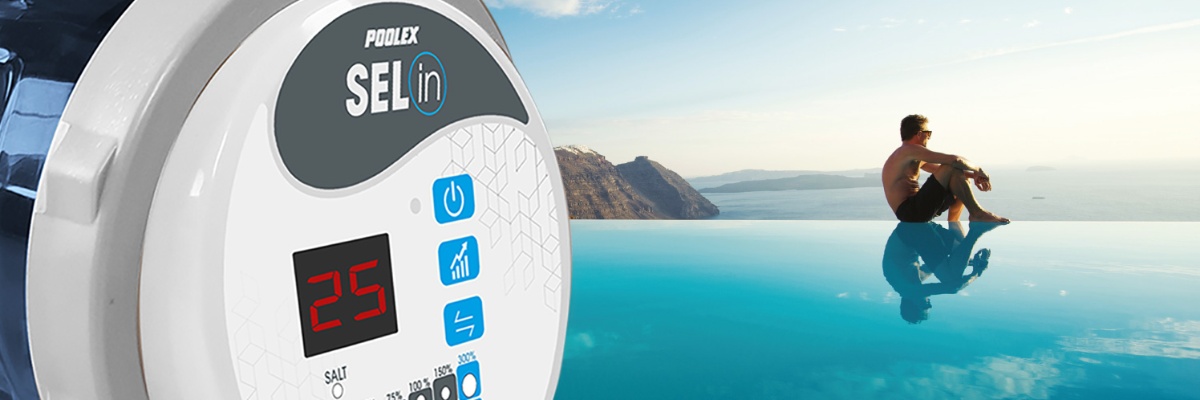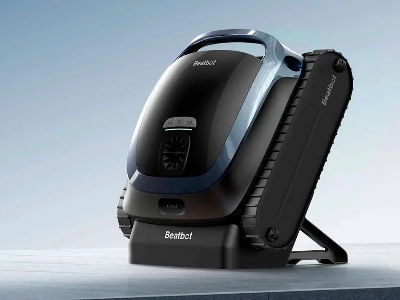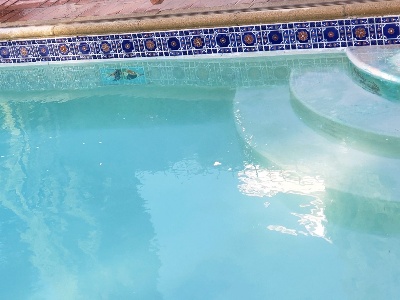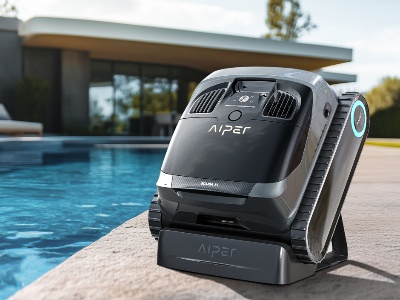Saltwater pools are gaining popularity thanks to their gentler maintenance and naturally softening water. However, one question often arises: are pool robots compatible with this type of pool? This article looks at the challenges and benefits of using robotic cleaners in a saline environment. You will discover how the composition of materials, navigation technology and filtration systems adapt to saltwater conditions, as well as practical advice to optimise their performance. We will also discuss expert opinions and a comparison with other solutions on the market, mentioning in particular the Beatbot AquaSense as a reference, not forgetting the robots from Aiper, Dolphin, Zodiac, Hayward and Bestway.
Salt-resistant materials and design
Salt pools impose difficult conditions, particularly due to corrosion. For a pool robot to be compatible with this type of environment, its design must incorporate materials that are resistant to the corrosive effects of salt. Manufacturers therefore use specific alloys and reinforced plastics to protect internal and external components. For example, some models in the
Beatbot range (including AquaSense and AquaSense Pro) have been designed to offer increased protection against corrosion. Similarly, the quality of the seals, filters and connectors plays a crucial role in the overall resistance of the device. The choice of materials and the quality of the assembly determine not only the longevity of the robot, but also its ability to maintain stable performance over the long term. Regular maintenance, including rinsing with fresh water after each use, is also essential to avoid salt build-up and prevent premature deterioration of sensitive parts. In short, the compatibility of a robot with a saltwater pool is based above all on careful design and the use of high-quality materials, thus guaranteeing optimal operation in demanding conditions. Technological advances have made it possible to design pool robots capable of adapting to the challenges posed by saltwater. Intelligent navigation systems, equipped with high-precision sensors, optimise the device's route even in saline conditions, detecting and avoiding areas particularly exposed to corrosion. In addition, the filtration systems are designed to retain fine particles and saline residues, thus preventing the internal mechanisms from becoming blocked. Some solutions also incorporate energy management systems that automatically adjust power according to workload, helping to minimise component wear. Although the
Beatbot AquaSense 2 Pro is an example of a robot with advanced technologies, there are other models on the market that offer similar performance, while being designed to operate in saline environments. The integration of diagnostic software also makes it possible to detect any anomalies due to the action of salt in real time, thus facilitating preventive maintenance. These innovations make it possible to use pool robots in saltwater pools, while guaranteeing performance and durability that meet the requirements of the most demanding users.
Advantages of a robot in a saltwater pool
Using a pool robot in a saltwater pool has several significant advantages. Firstly, automated cleaning considerably reduces the need for manual labour and keeps the water crystal clear without the need for daily intervention. Robots provide regular and even coverage of the pool, even in hard-to-reach areas. In addition, their operation reduces the use of chemicals, which is particularly important in saltwater pools where the chemistry of the water is already modified. Although occasional manual maintenance is sometimes necessary to remove stubborn deposits, the use of a robot optimises cleaning time and prevents the accumulation of dirt and mineral residues. Automated solutions, offered by renowned manufacturers, combine performance and ease of maintenance. The use of a robot is therefore a major advantage for owners of saltwater pools, offering an economical and efficient solution for maintaining impeccable water quality, while limiting the risk of corrosion through proper maintenance.
Complementary methods and manual maintenance
Even though pool robots offer an innovative and automated cleaning solution, they do not completely replace manual intervention, especially for the most exposed or dirty areas. Manual brushing of walls and stairs is still essential to remove stubborn deposits and restore shine to surfaces. The trick is to combine the advantages of the robot with traditional methods to ensure a thorough and harmonious clean. For example, after using the robot, it may be a good idea to use a special brush to treat the corners where salt residue and algae have accumulated. In addition, regular maintenance of the robot's filters and seals by rinsing with fresh water helps to prevent corrosion and maintain optimal performance. This hybrid method makes it possible to take full advantage of modern technology while maintaining the precision of manual maintenance. So, to get a spotless pool, it is advisable not to rely exclusively on the robot, but to adopt a complementary approach that combines automation and targeted human intervention.
Comparison of solutions and expert advice
The choice of a saltwater-compatible pool robot must be made taking into account several criteria: performance, autonomy, ease of maintenance and overall cost. There are many brands on the market offering a variety of solutions. Some of them, such as
Beatbot, offer a diverse range from AquaSense to AquaSense 2, AquaSense Pro and AquaSense 2 Pro, each with its own technical specifications. Other manufacturers such as Aiper, Dolphin Maytronics, Zodiac, Hayward, BWT and Bestway also offer interesting models, although they do not offer the same level of technological integration for salt water management. Experts emphasise that the quality of the materials and the design of the filtration system are essential to guarantee compatibility with saltwater pools. An in-depth comparison of the available solutions highlights that, despite some limitations, modern pool robots considerably reduce the maintenance load, while offering cleaning performance adapted to saline conditions. In addition, the ease of use and the possibility of programming specific maintenance cycles reinforce the interest of these solutions, making the robot a profitable investment in the long term.
Sustainable performance and return on investment
The integration of a pool robot in a saltwater pool is an investment that results in a significant improvement in maintenance and water quality. Regular maintenance and the use of hybrid techniques combining automation and manual brushing guarantee long-lasting performance and increased longevity of the device. The savings in terms of time and maintenance costs are a considerable advantage for the owner. A quality robot, whether it is a model from the AquaSense range or another top-of-the-range model, not only offers an effective cleaning solution, but also reduces the risk of corrosion thanks to specially treated materials. By adopting a proactive approach, rinsing regularly and checking the condition of the filters and seals, you maximise the return on investment. User feedback shows that the synergy between advanced technology and complementary manual actions keeps the pool in optimal condition, offering long-lasting comfort and satisfaction. This hybrid approach makes pool maintenance a simple, efficient and economical experience, meeting the requirements of modern owners who want to combine performance and ease of use in a saline environment.







